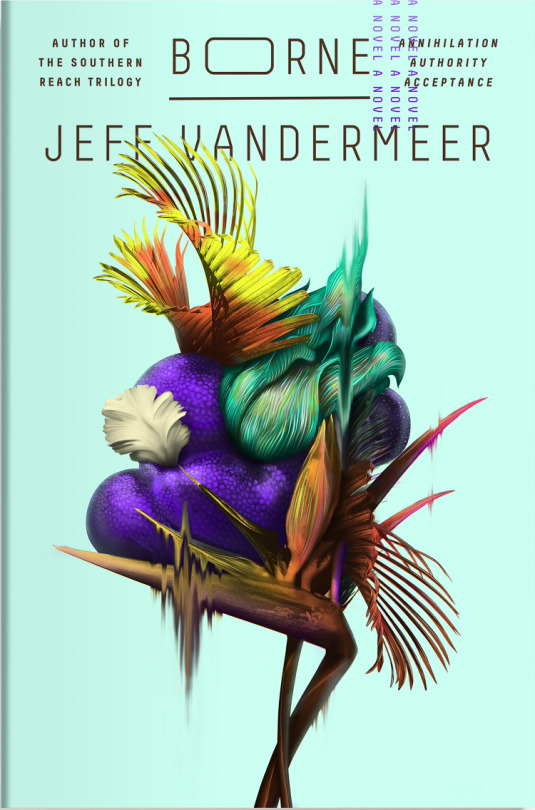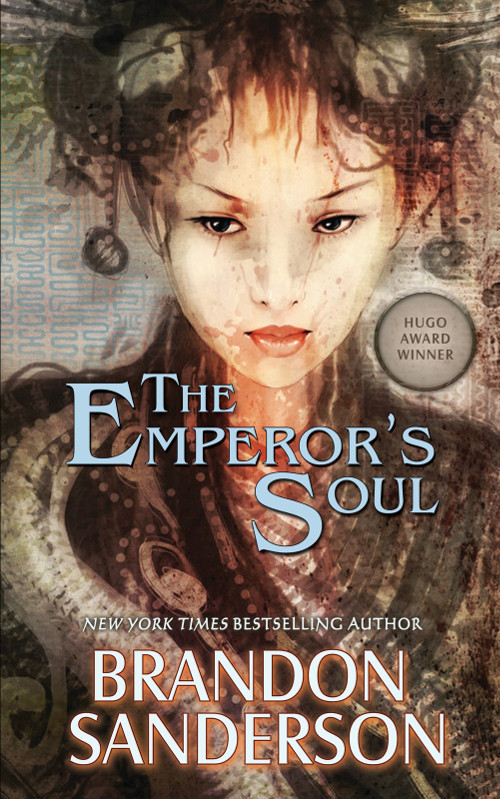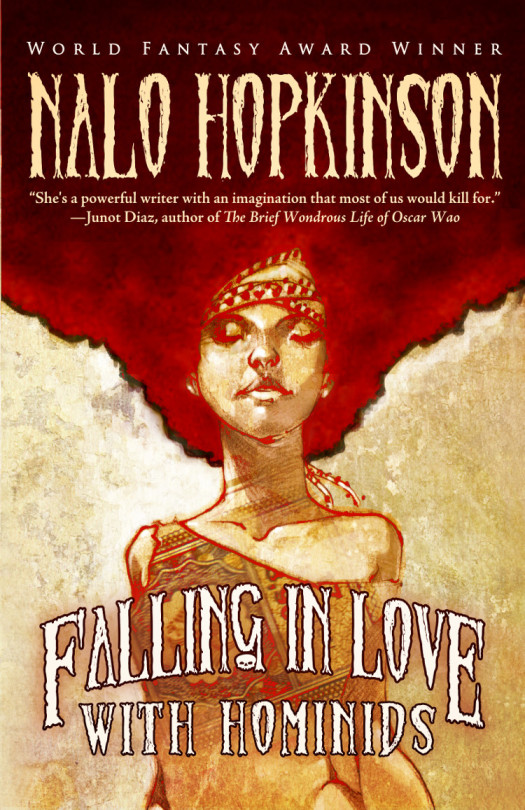Tachyon tidbits featuring Michael Swanwick, Jeff VanderMeer, Brandon Sanderson, and Nalo Hopkinson
The latest reviews and mentions of Tachyon titles and authors from around the web.

Michael Swanwick (photo: Beth Gwynn), Jeff VandeMeer (Kyle Cassidy), Brandon Sanderson (Ceridwen via Wikimedia Commons), and Nalo Hopkinson (David Findlay)
WE READ A BOOK selects Michael Swanwick’s NOT SO MUCH SAID THE CAT as their June read.
Steven
That’s probably not good for you, but I’ll try.
For June, I’m picking a book by one of my favorite sci-fi/fantasy authors, Michael Swanwick. I’ve read some of his books before, and we’re going to read a lot more over the course of this book club, which will keep going until we die or hate each other, right?
I’m picking a short story collection, and, Jeff, you won’t be surprised at all when you hear the title. This book club hasn’t been going on long enough for any Internet strangers reading this to know much about us yet, but you’ll know, Jeff. You’ll know.
The story collection is called NOT SO MUCH SAID THE CAT.

Jeff
Cats. I should have known. It’s actually a little surprising that you’ve gone through two book picks without selecting a book about cats in some form or another. In that sense, I am already impressed.
This does actually sound good though. I enjoy short stories and, according to Amazon, Michael Swanwick is the master of short science-fiction. I don’t know that Amazon is exactly the gatekeeper of great literature, but it’s enough to encourage optimism.
For PUBLISHERS WEEKLY, Jeff VanderMeer shares 5 Writing Tips.
Writing the rough draft of a novel might seem hard enough all by itself. But after you have a draft, the work is still just beginning because for most novels revision is the key to success—as is finding enthusiasm for revision to make your manuscript everything you want it to be. Such enthusiasm means not just renewed energy and having a positive outlook after the initial adrenaline rush of inspiration, but also being patient. Often, this means not seeking out “efficiency” in your process. Getting too quickly to where you want to go, getting there too smoothly, is antithetical to thinking through complex issues. You want roadblocks, confusion, chaos, and doubt. Unexpected, wonderful things come out of this approach.
But at some point, no matter how good your partial or rough draft is, you may also have to methodically test your novel—in all ways, from the structure down to the paragraph level. For my new novel BORNE, I made a number of revisions based on taking a step back and thinking about what I wanted the book to emphasize and what the characters told me about the story.

1. Changes to structure can relieve pressure and allow your novel to breathe.
Initially I had thought of the book as being in two parts, and the sort of book where you receive much of the context up front. But as I weighed how much information to provide to the reader and where, I realized I should experiment with a three-part structure because I was in danger of off-loading too much context too quickly on the reader. In novels not set in the present-day, this can result in an undesirable thickness that weighs down scenes. As soon as I mapped out what this change would mean, I felt a huge sense of relief. Suddenly the whole idea of even what scenes had to go where changed drastically.

3. The emotional depth of your story can be affected by how you provide exposition.
A change in structure meant a change in the length of the novel to some degree, but more importantly it meant I had more space for context related to setting and landscape and history to be situated at regular intervals along the way—only in the places it was needed and thus made more active than simply inert exposition. This changed the texture of the novel by making individual moments of description or explanation shorter. The space left behind is filled instead by the emotional lives of the characters—a kind of interiority with regard to the narrator that hopefully deepens the novel and makes it more emotionally complex. Ultimately, then, whereas in my prior Area X novels the setting deliberately seems to devour the characters, the characters in BORNE stand out in stark relief from the setting.
4. A multi-level narrative voice requires detailed attention at the paragraph level.
Because I saw Rachel as an educated, sophisticated voice, the rough draft often had too many words better suited for an essay. I felt this was necessary in the draft to establish voice, but in revision, I cut or changed a number of such instances while leaving others. What I left was enough to signify the kind of narrator Rachel was, but the cuts also supported the changes to structure that resulted in fewer “lumped” descriptions of setting. In a way, the simpler the language became, the more complex the effects. This is because some of the more complex word choices drew too much attention to themselves in the midst of highly emotional scenes—scenes in which I wanted the reader fully engaged in the moment of the scene. However, leaving in several of these complex word choices was essential not just to characterization but to the frame of history through which Rachel tells the story. The diction must move from informal to more formal at moments when Rachel thinks she is imparting something of historical importance. Without the signifiers of more complex vocabulary, I could not make this shift without it being jarring.

Chris Lough at TOR.COM reveals that Mapping Brandon Sanderson’s Cosmere Raises So Many Questions About His Future Books.
In fall of 2016 fantasy author Brandon Sanderson officially revealed in the ARCANUM UNNBOUND collection that almost all of his books take place in a single cosmos, known as the “Cosmere”. Along with charts of each star system known about in the Cosmere (here’s an example), the book hinted that characters from the Mistborn, The Stormlight Archive, Elantris, and Warbreaker series had already begun quietly appearing on other worlds (i.e. other books) within Sanderson’s fictional universe.
These “worldhoppers” hold the secret to the larger epic underpinning Brandon Sanderson’s novels and stories, so I got curious…what do we know so far about them?

There’s an inciting event behind all of the worlds in the Cosmere which narratively linked them together and produced the first “wave” of worldhoppers. From Martin Cahill’s “Let’s Talk About Brandon Sanderson’s Cosmere“:
…a long, long time ago, there was a singular entity that went by the name/title of Adonalsium. From what little we know, it was a celebrated force of life and creation. But something happened and Adonalsium was shattered into sixteen shards, each of them containing a single aspect of Adonalsium’s cosmological DNA and power, with both positive and negative aspects contained within.
Present at the Shattering of Adonalsium were sixteen individuals, who found the Shards left from the catastrophe and took them up, gaining immense power, and essentially ascending to godhood. With this newfound power, the Shardholders went off to do whatever it is that gods do.
With a consciousness to direct them, many of the Shards began to Invest their magic and influence in certain planets or peoples. Every Shard impacts a planet in a way that allows certain individuals to tap into its own distinct magical power.
This first wave of sixteen Shards–known more recently as Vessels–puts the list of known worldhoppers in the double digits already. This is our framework for mapping The Cosmere-Thus-Far, allowing us to illustrate the relationships between planetary systems in the Cosmere by way of the beings who have “hopped” between them.
LIST CHALLENGES includes FALLING IN LOVE WITH HOMINIDS among their 100 Must Read Books by Women Authors.

For more information on NOT SO MUCH, SAID THE CAT, visit the Tachyon page.
Cover design by Elizabeth Story
For more info about BOOKLIFE: STRATEGIES AND SURVIVAL TIPS FOR THE 21ST CENTURY WRITER, visit the Tachyon page.
Cover by John Coulthart
For more on THE EMPEROR’S SOUL, visit the Tachyon page.
Cover art by Alexander Nanitchkov
Design by Elizabeth Story
For more information on FALLING IN LOVE WITH HOMINIDS, visit the Tachyon page.
Cover art by Chuma Hill
Design by Elizabeth Story
